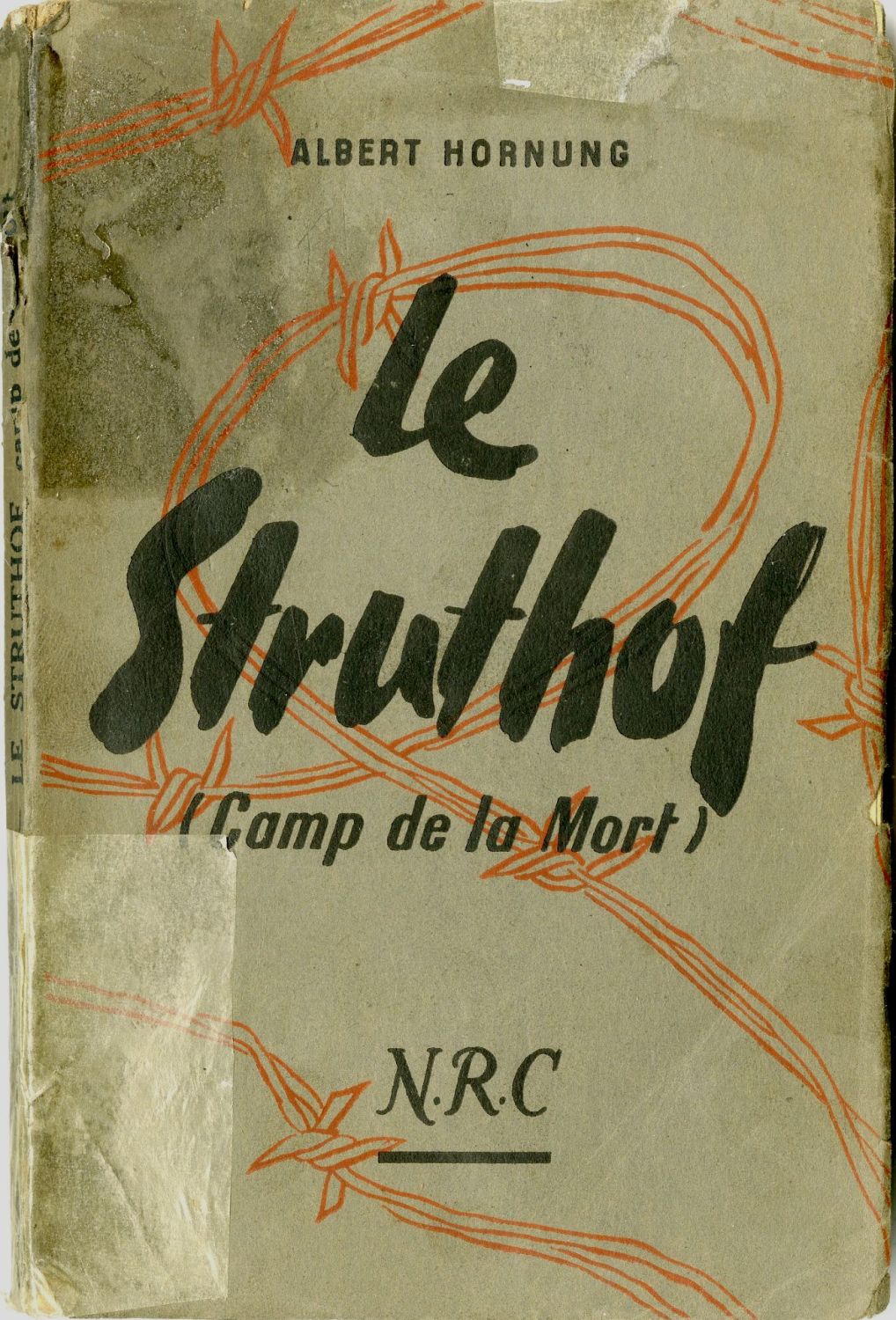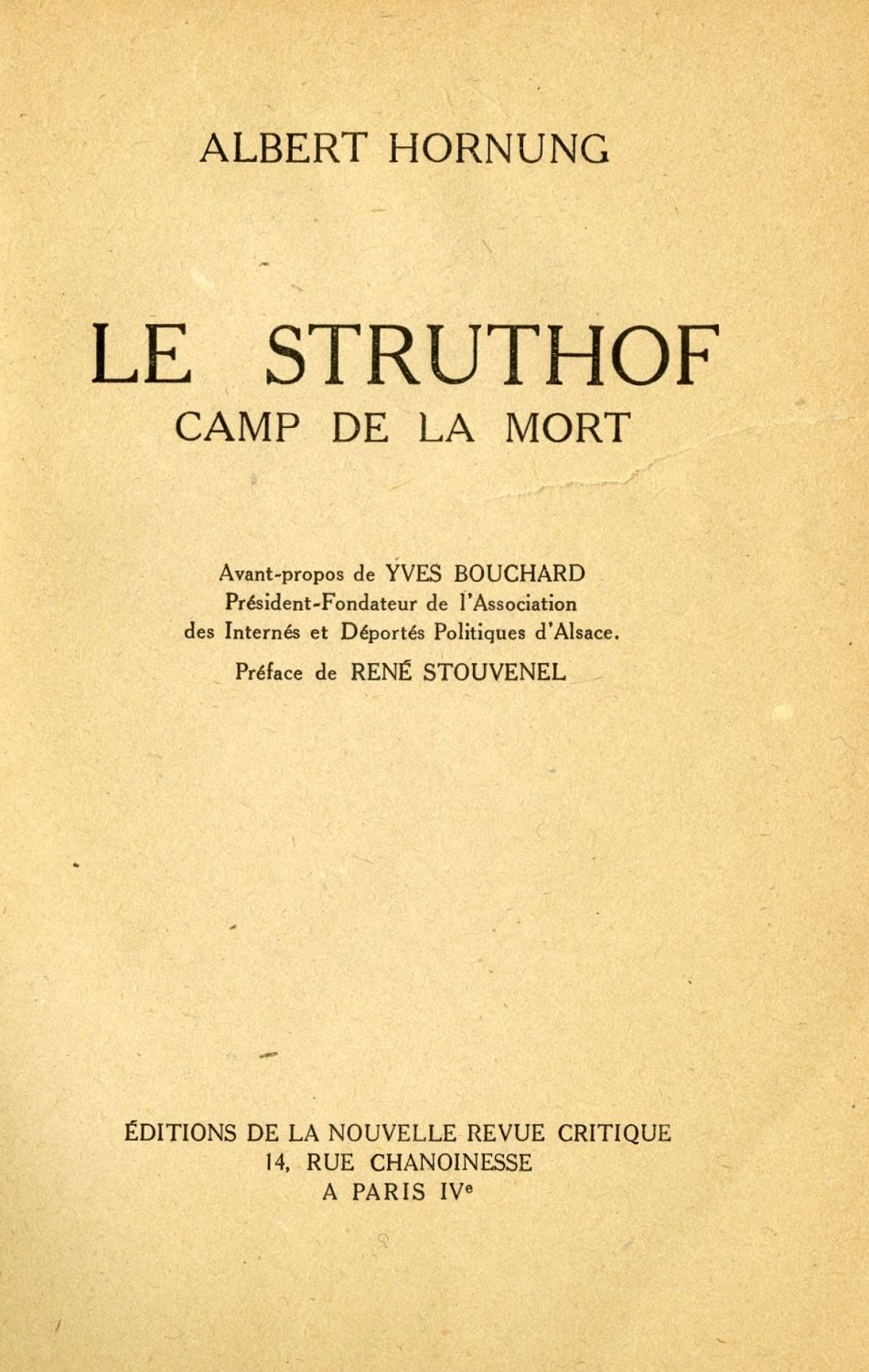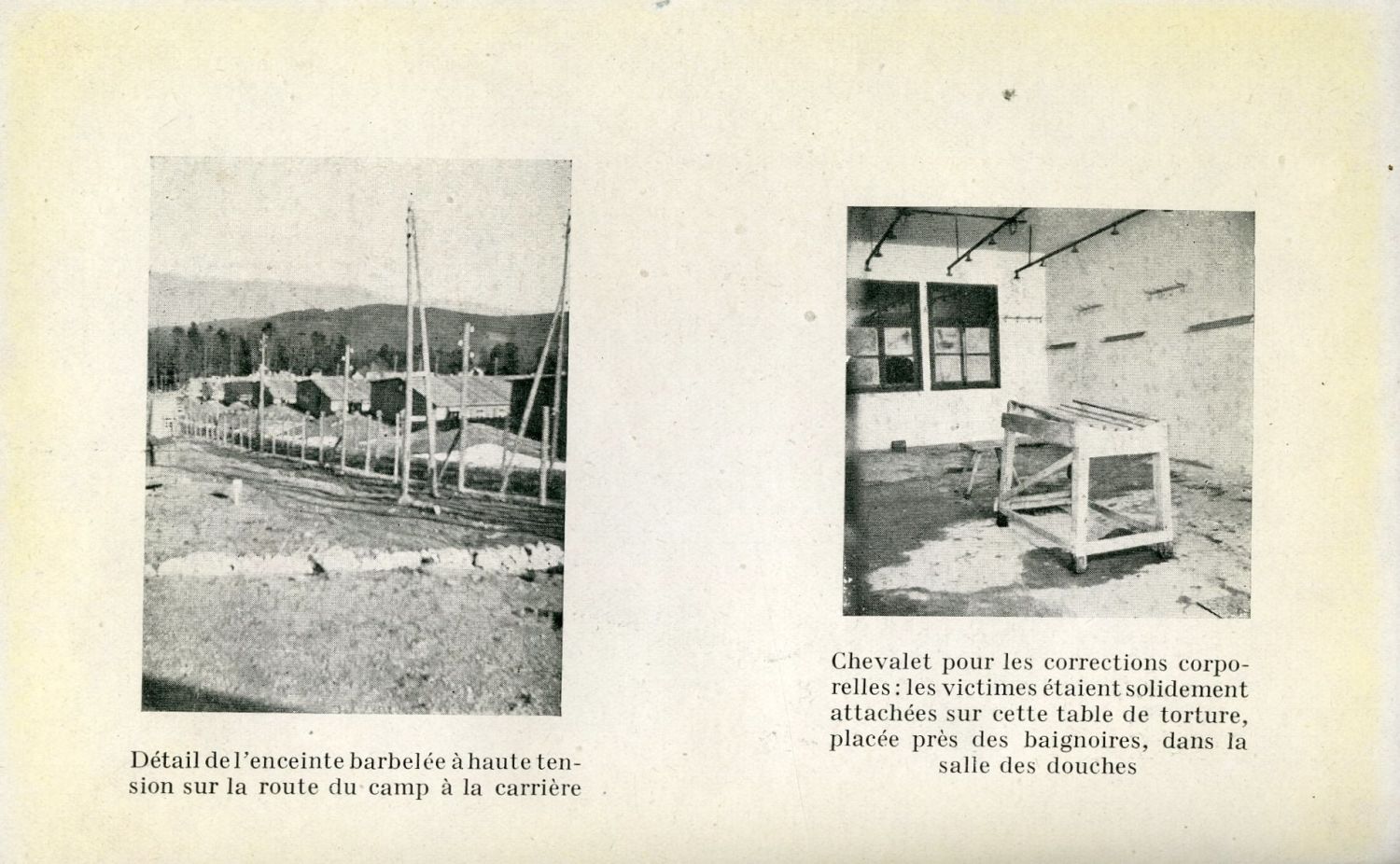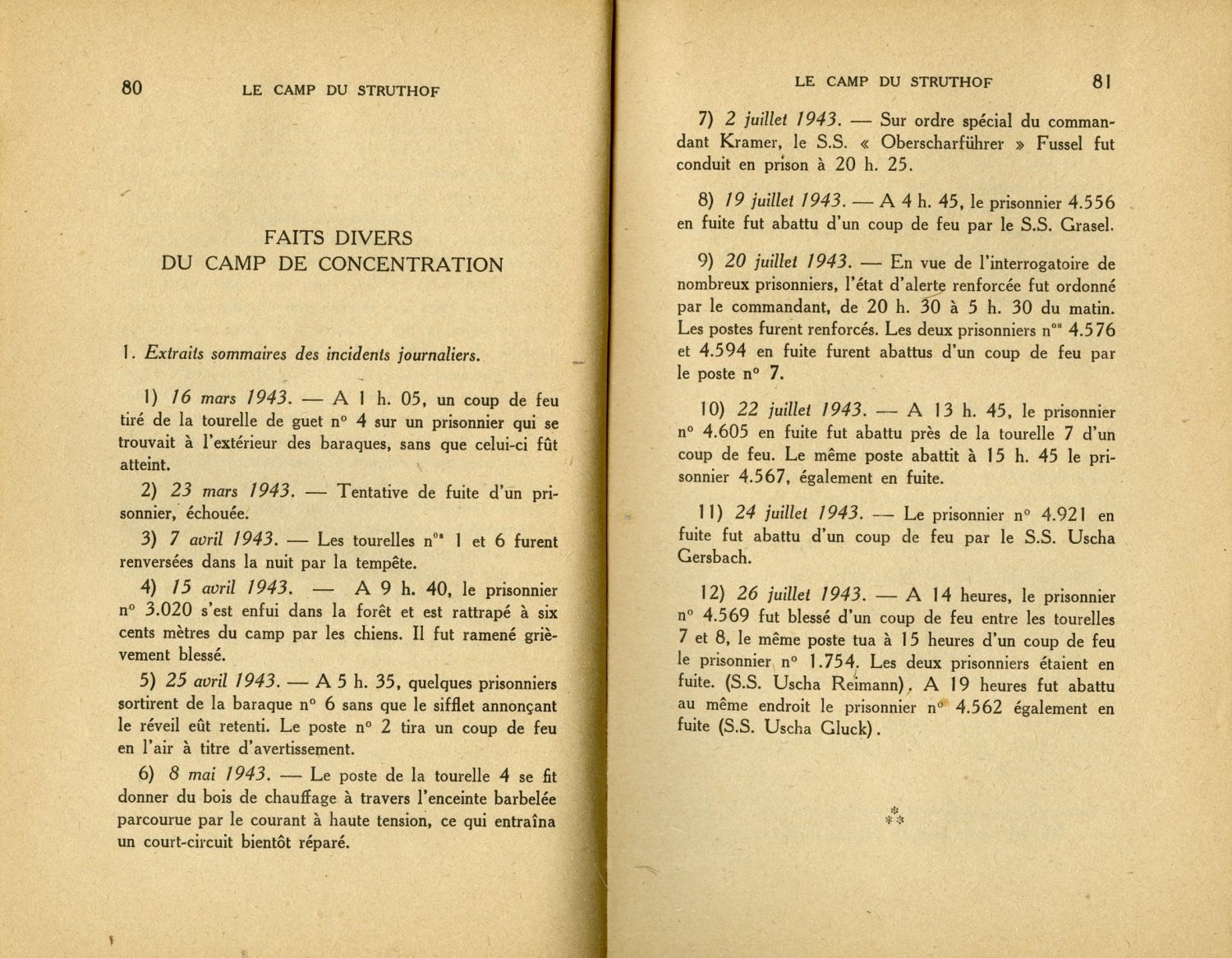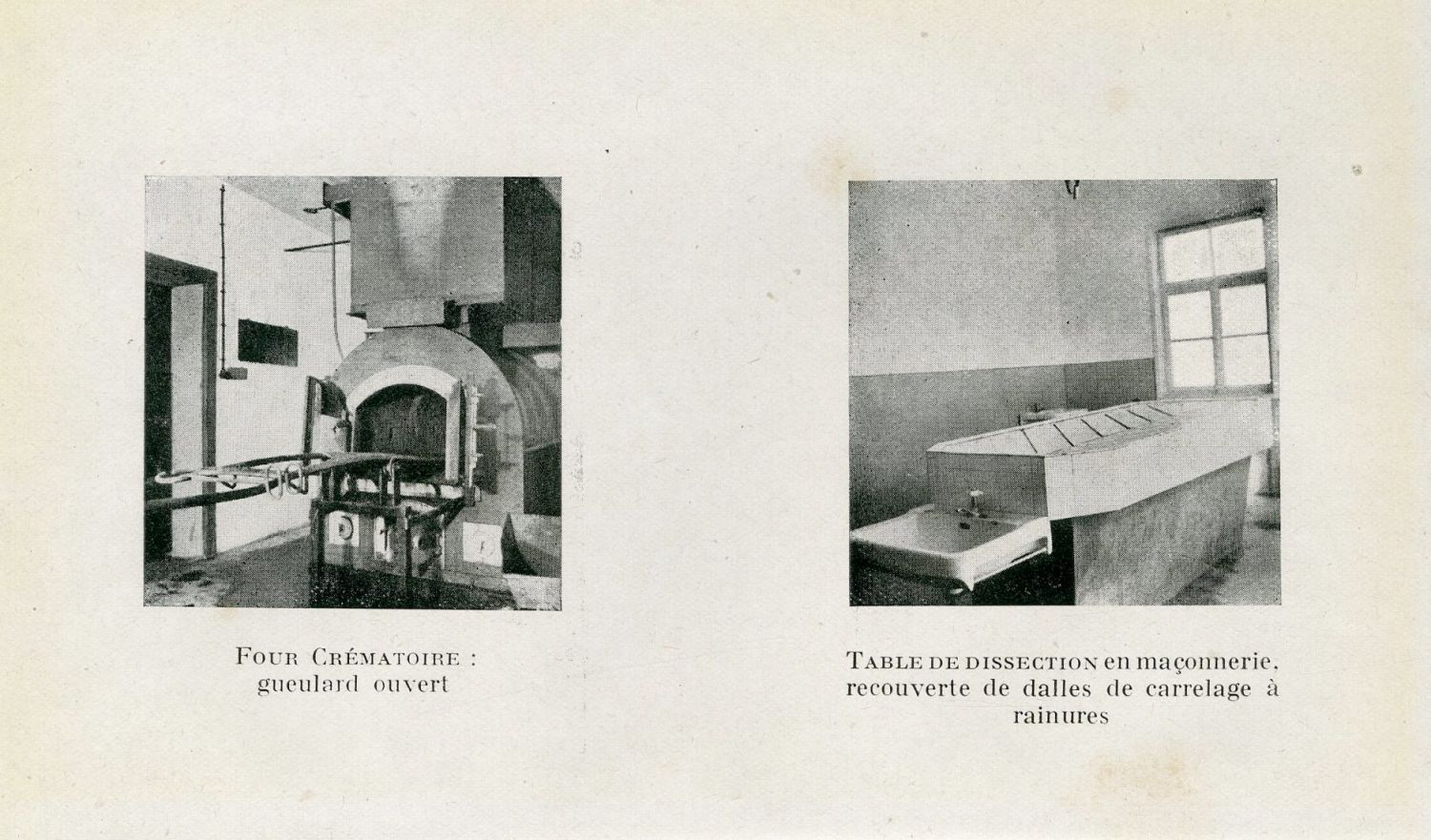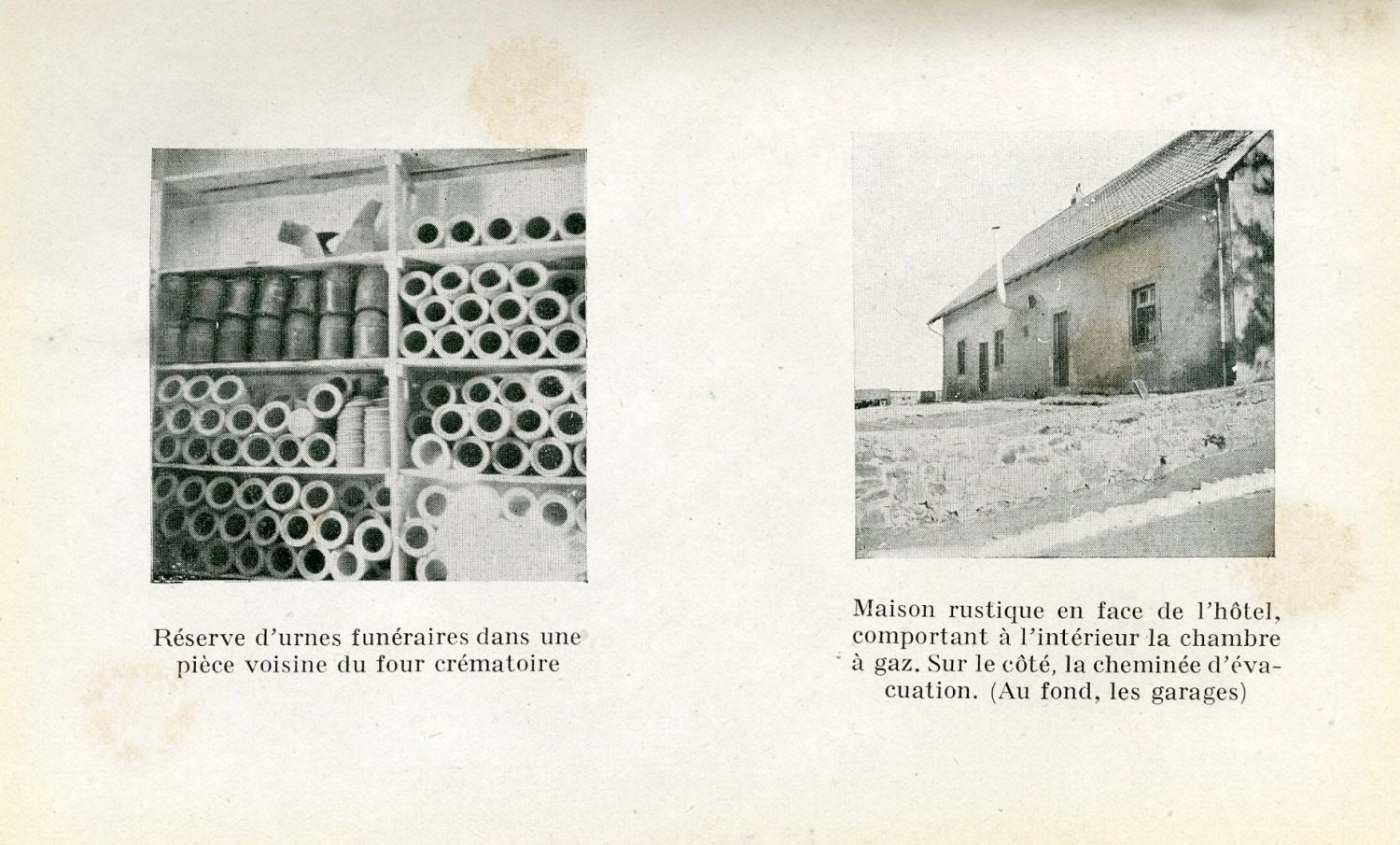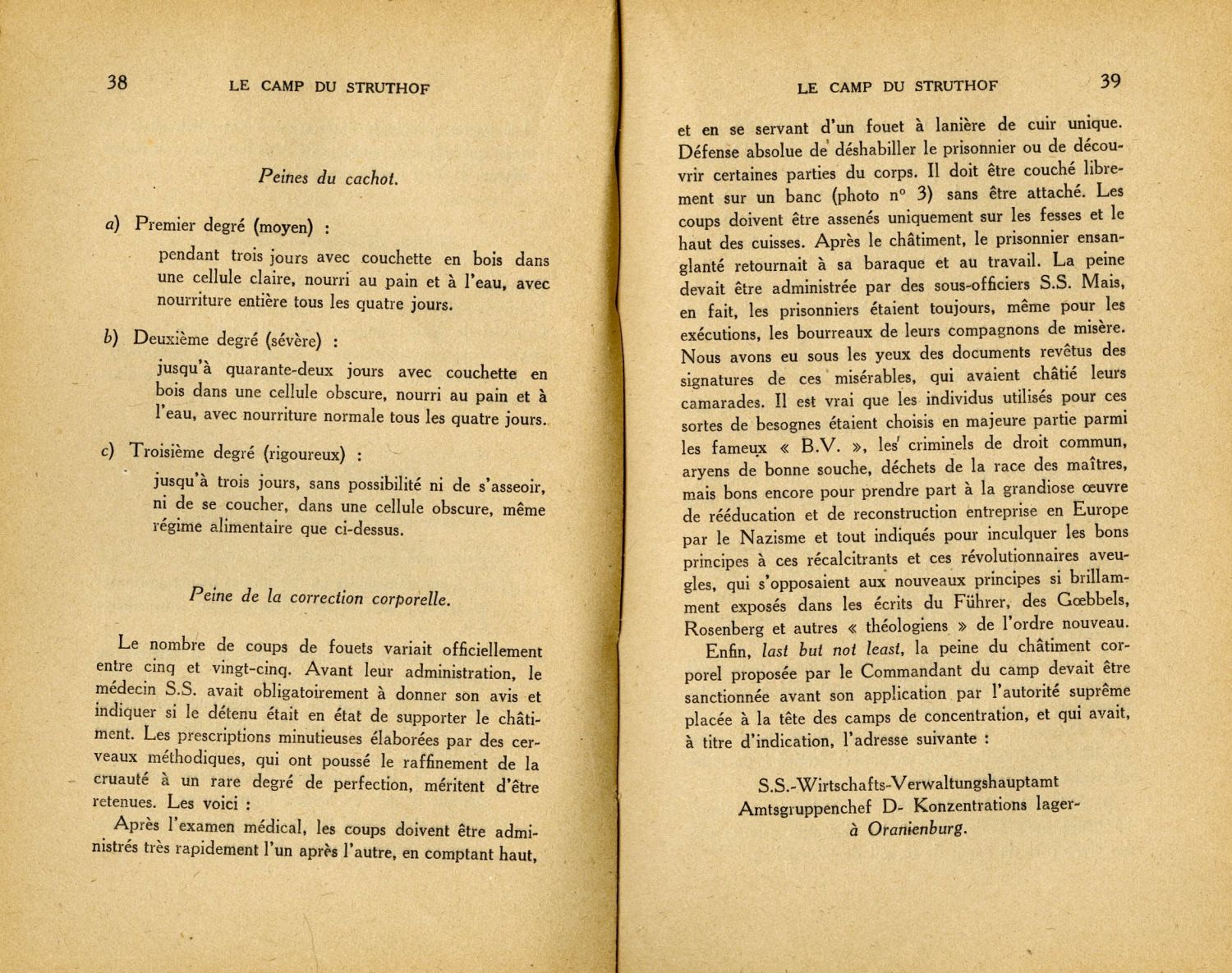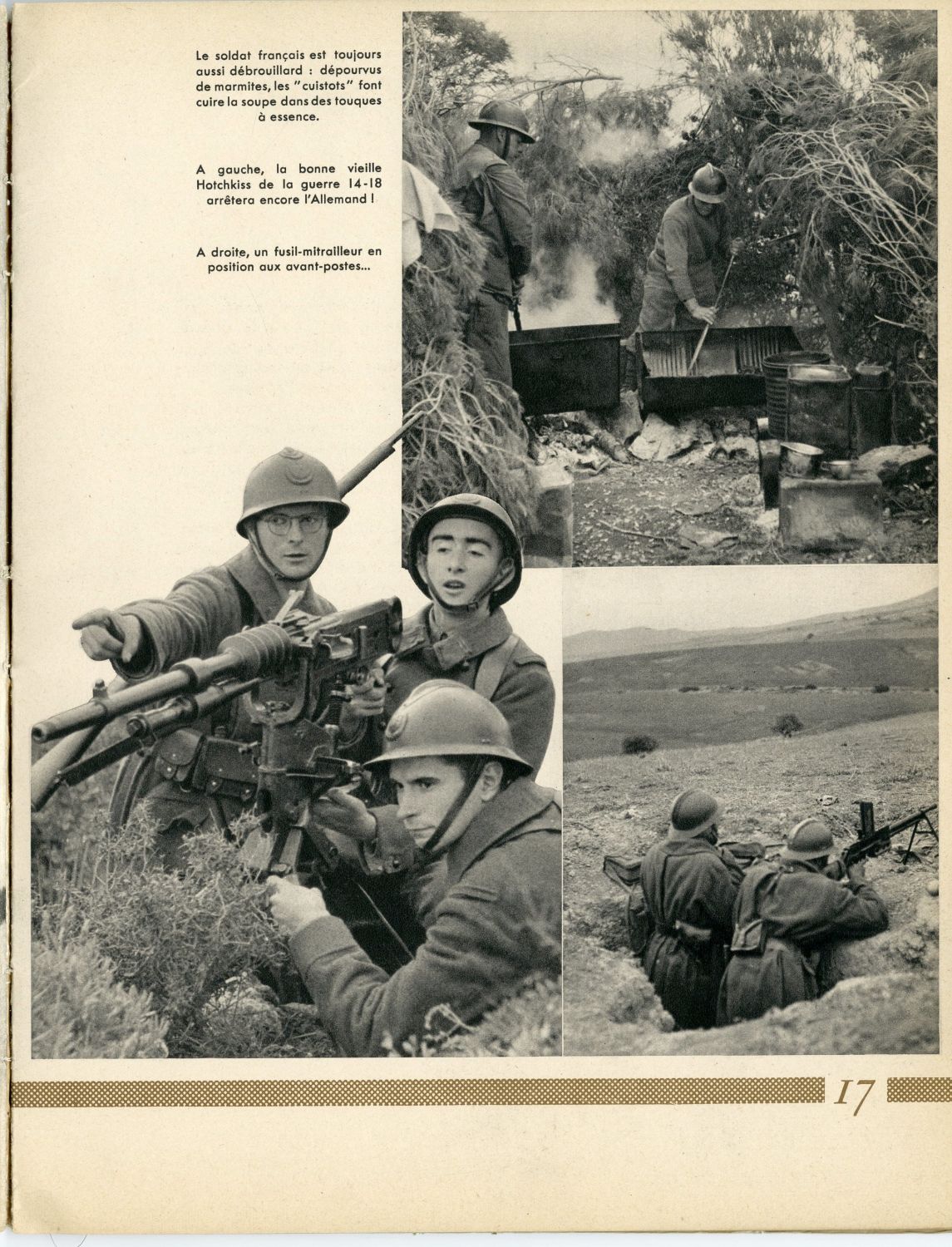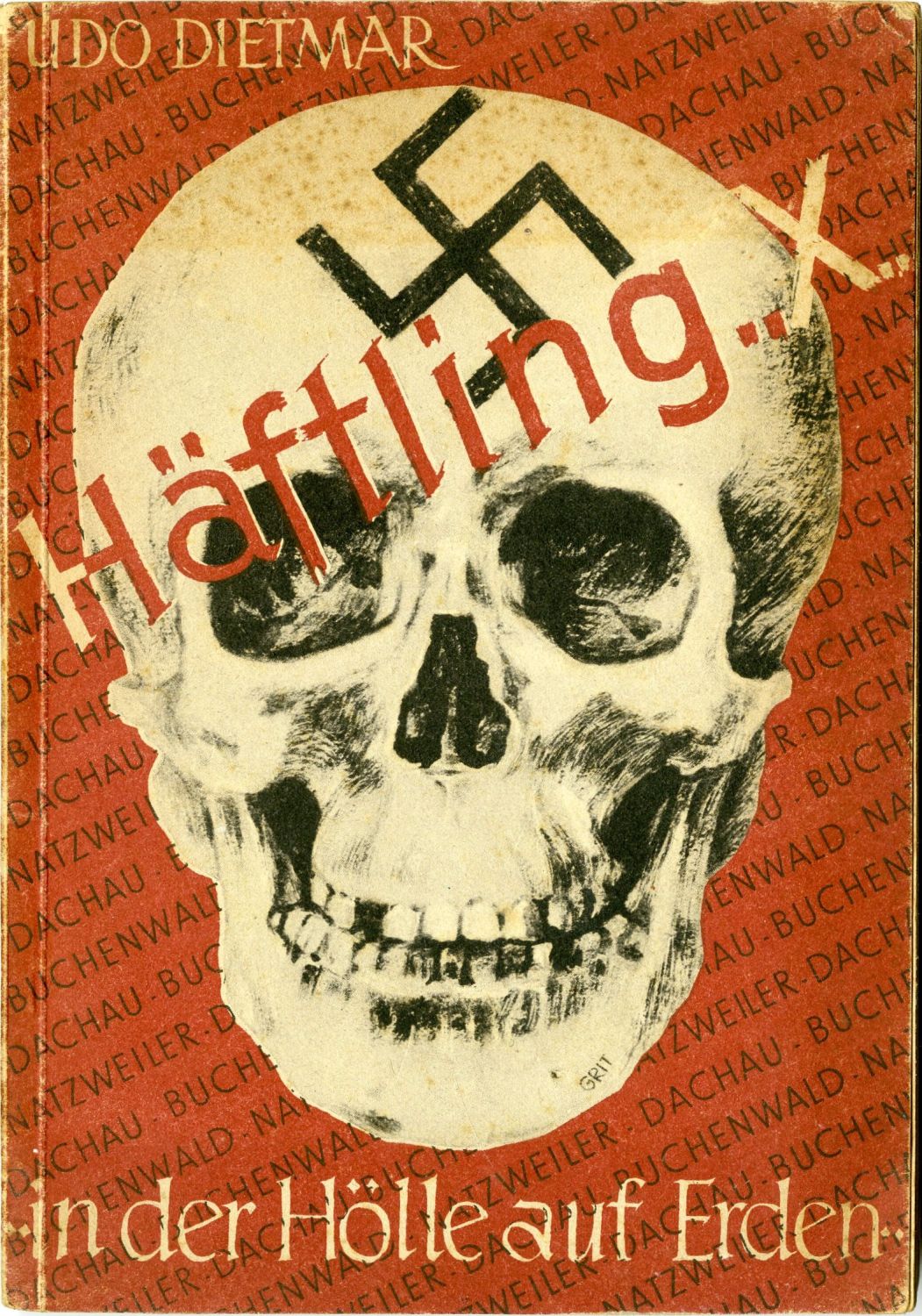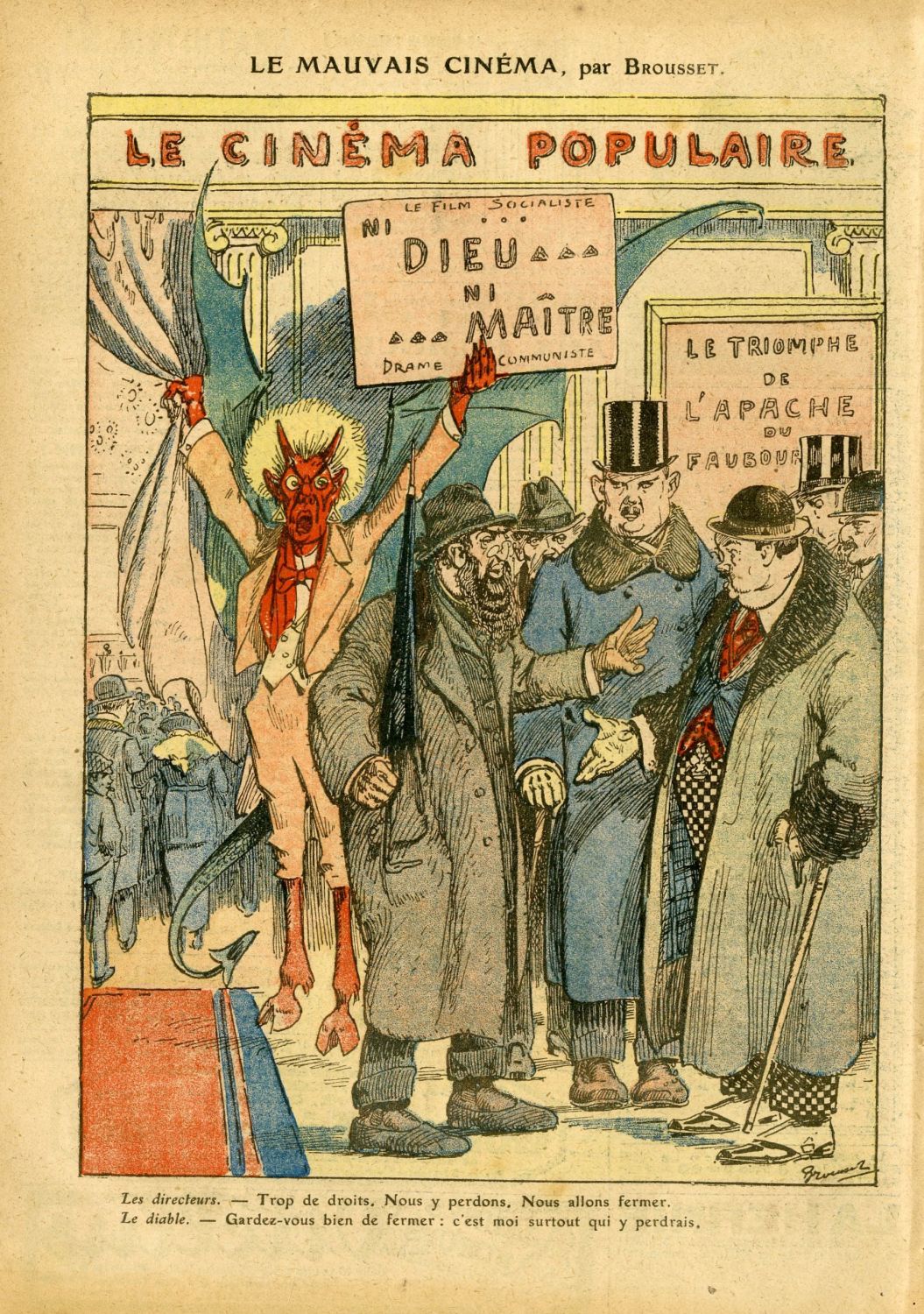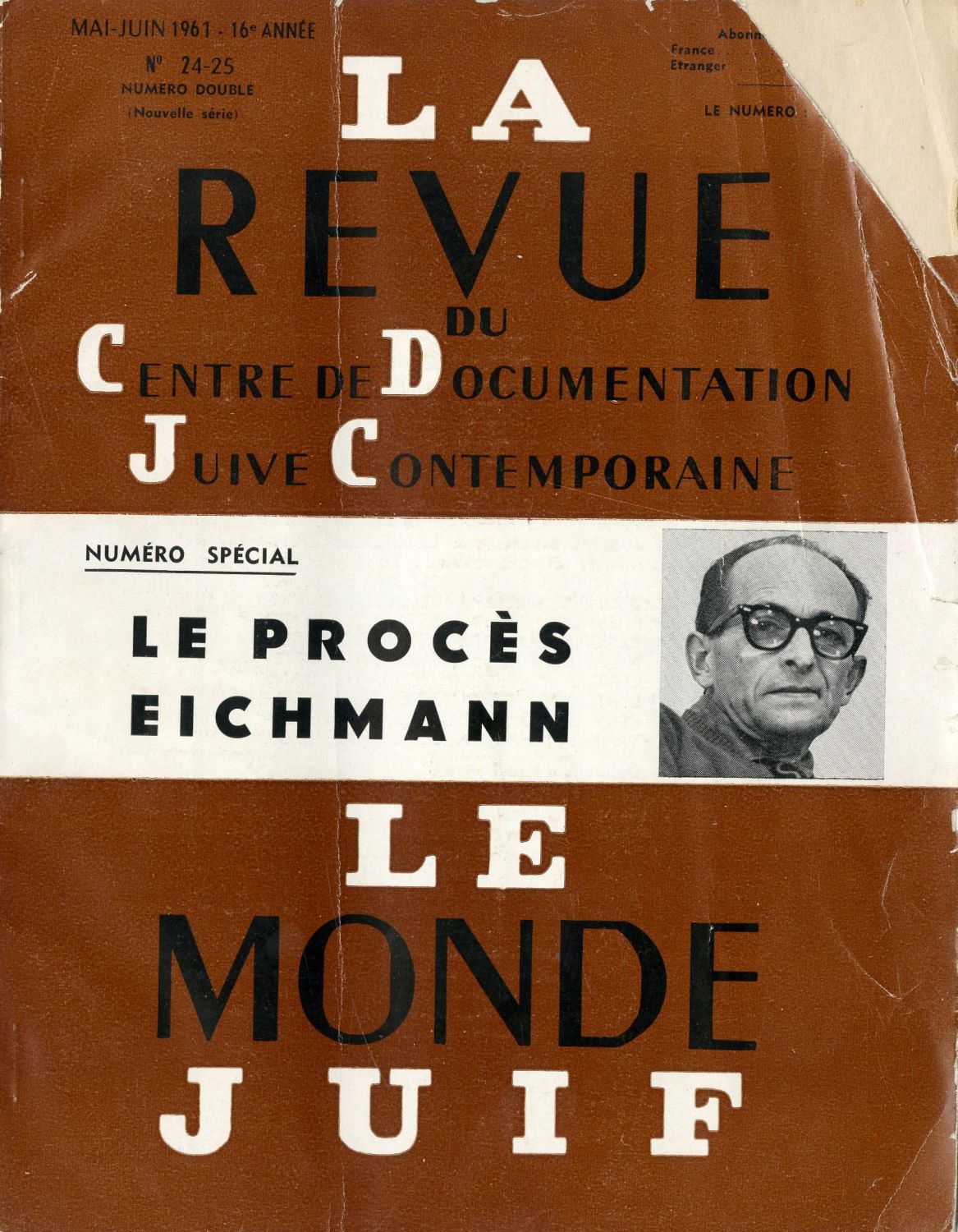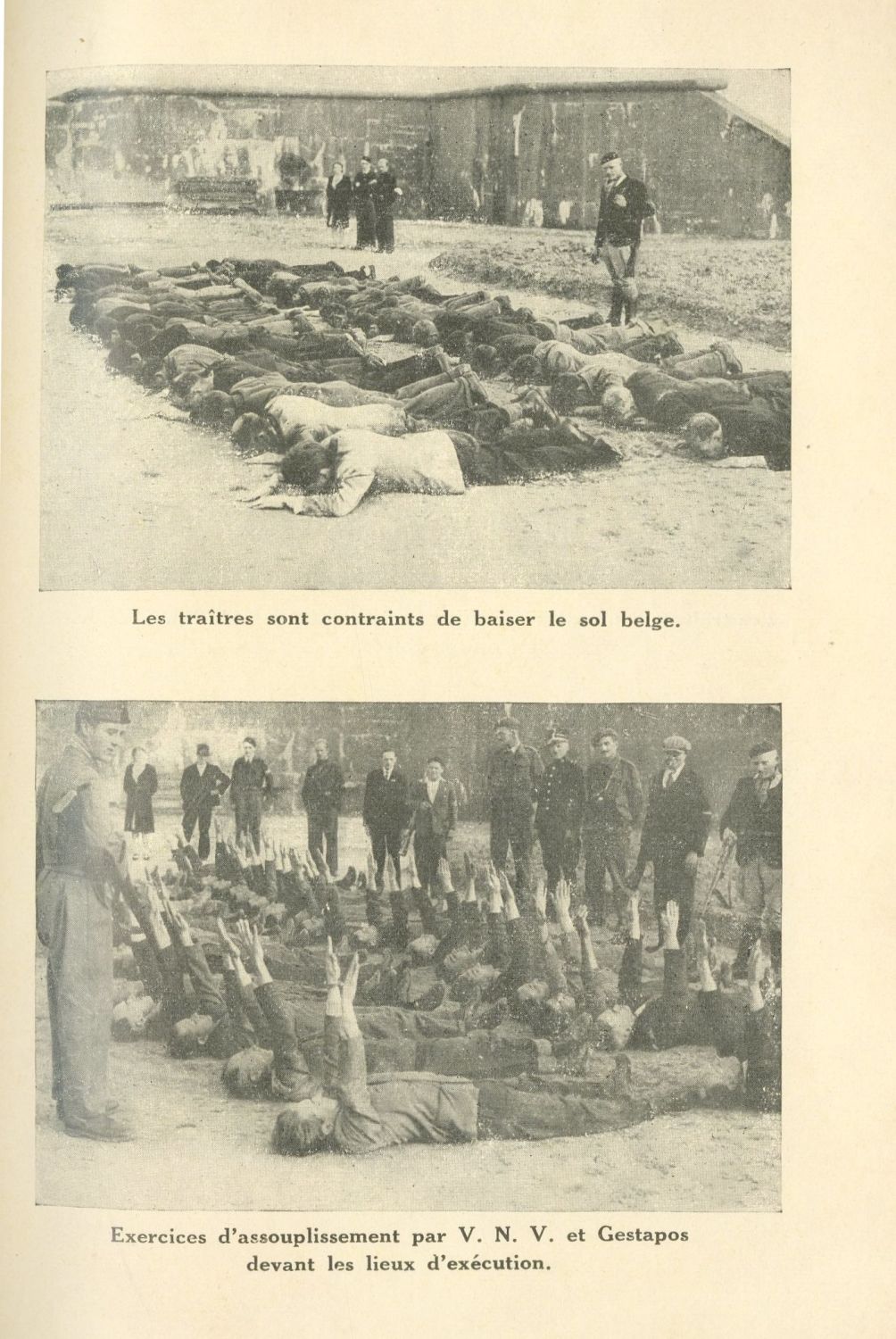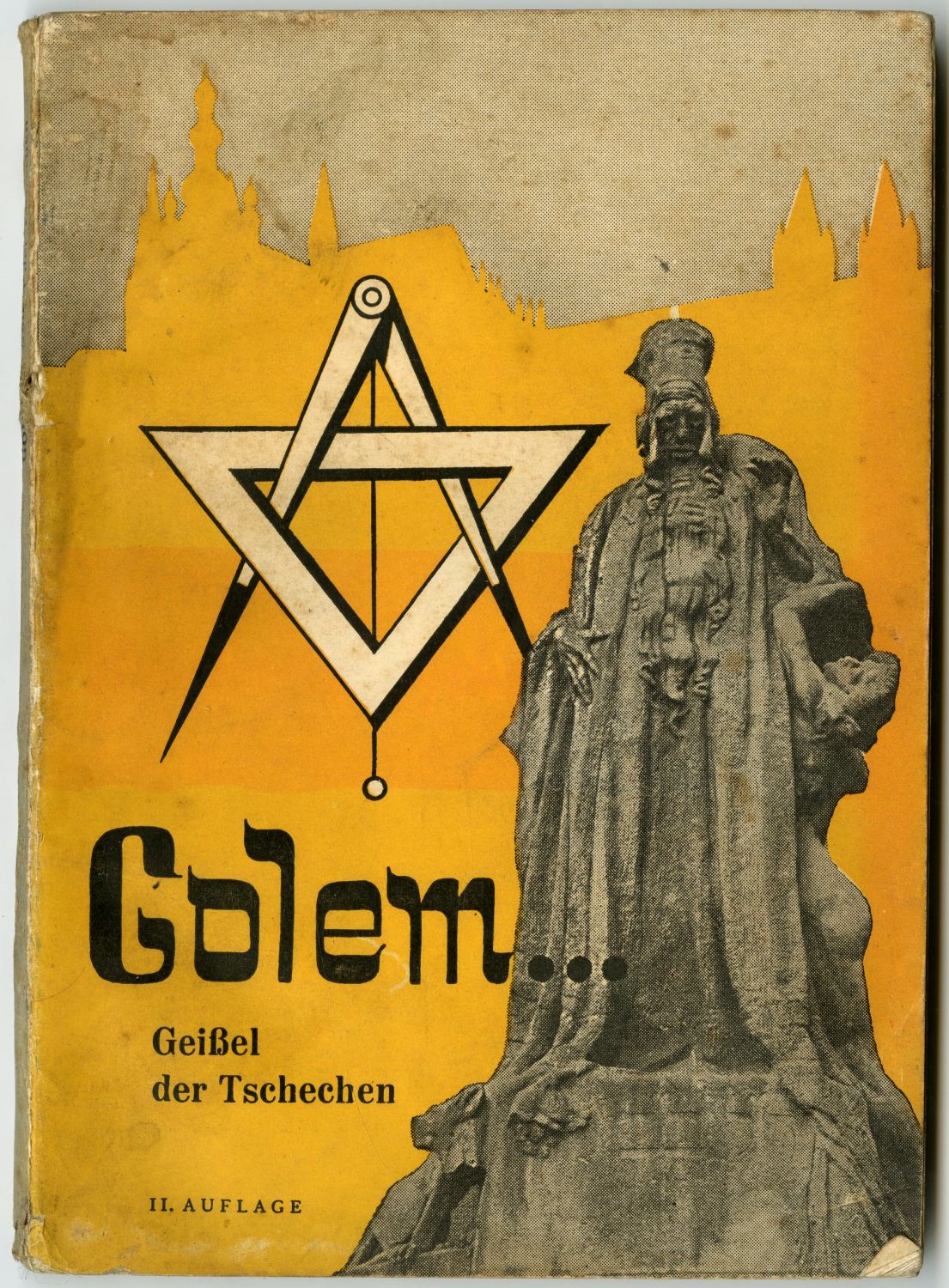Le Struthof (camp de la mort) by Albert Hornung, NOUVELLE REVUE CRITIQUE publishing. An early and rare report extensively describing the horrors of Struthof, published a few months after the liberation of the camp. Paris, 1945 - First edition. French.
An early and detailed report by a former prisoner in the Natzweiler-Struthof camp - the only extermination camp established by the Nazis on French soil. Albert Hornung was taken to the Struthof upon its establishment in 1941, and he was one of the 150 prisoners who participated in the forced labor of building the camp. The writer describes the structure of the camp, the number of prisoners incarcerated there throughout its years of operation, the camp's laws, and its daily conduct in detail, the book includes harsh passages documenting the cruelty of the Nazis in the camp.
Albert describes in detail the stages a prisoner went through from the time he arrived at the camp - kicking, punching, showering - while looting all his belongings by the SS. For example, he tells of a prisoner who, upon arrival at the camp, did not "realize" where he had arrived, and complained in the camp office that his gold wristwatch had been stolen - a short time later the same prisoner was murdered. A short time later, the prisoners noticed the prisoner's wristwatch worn by the block commander. The prisoners underwent a haircut on arrival - which was done in a barracks filled with a pile of men's and women's hair, interrogation, and dressing in prisoner clothes with white and gray stripes.
Albert describes the harsh conditions of the prisoners in the camp – overcrowding in the barracks forced them to sleep three in one wooden bunk at night, while blinding lights constantly illuminated the barracks and made it impossible to sleep continuously at night. They spent most of the day doing forced labor in a nearby quarry, where they were transported in an underground cave more than a kilometer long. One of the cruel laws adopted by the Nazis was that responsibility for the entire conduct of the camp was on the prisoners themselves, so that if any mishap occurred, the "guilty" person was immediately caught and executed during work, or in the evening near the barracks in front of all the camp inmates. The camp commander entered the barbed wire compound only for exceptional incidents. SS officer Bollmann was the brutal personality in the camp. He persecuted the prisoners at work and caused them irreparable damage, since they did not provide the necessary work due to their severe physical condition, they were not provided with daily rations, thus making their situation even worse. Bollmann used to abuse prisoners in various ways described in the first part of the book, in a way that is difficult to detail here. He would do so in the most horrible place in the camp called the Death Room. He also describes the various punishments the prisoners received - on one page Albert details different prisoners, stating them by their prisoner number alone, and the punishments they received: "Prisoner No. 180.928 - political Russian. 15 lashes for stealing another prisoner's package during the night . . . Prisoner 191,485, 20 shots for attempting to escape on the way to work and stealing an entire loaf of bread...", another prisoner sentenced to flogging for attempting to steal fruit, and more.
In the second part of the book, Albert describes the failed escape attempts of prisoners. It lists the prisoner numbers of each of them and the exact date they tried to escape. Among other things, he relates that on August 2, 1943, 59 Jewish men and girls from Ravensbrück were brought to the camp. After eight days, 15 of the women were taken to the gas chamber to their deaths by strangulation, and their bodies were transferred to Strasbourg for autopsy. Two days later, the other women were murdered in the same way, as were the thirty Jewish men. One of the girls, who tried to escape, jumped over a small wall on the slope of the cell and was shot instantly. Albert lists the name of the shooter, as well as the Nazis who were present at this event. He adds that during July-August 1944, executions were carried out almost daily by shooting or hanging, in front of all the camp inmates. And when the sounds of fighting could be heard in the camp as the Allies approached, mass executions took place in the camp every day. Albert says that in all the years he spent in the camp, he witnessed only three cases of prisoners being released.
Albert reveals among other things, a lesser-known fact about Struthof – in the Struthof camp, as in the other death camps, the Nazis conducted experiments on human beings. The prisoners were injected with gases designed to test the neutralization of toxic substances introduced into their bodies in order to test their effectiveness. In addition, horrific experiments were carried out in the camp on fetal women. The camp served as a source of supplies for body parts for the medical school of the University of Strasbourg. Albert details the cremation of the bodies in the crematorium that operated in the camp, and describes in detail the manner in which it operated, and the various entrances to and from the camp.
The Natzweiler-Struthof concentration and labor camp was established near the village of Natzweiler in Vosges in northeastern France, about 50 km from Strasbourg. The camp was active from May 21, 1941 until early September 1944, when the SS evacuated the camp's inhabitants on a death march towards Dachau. The camp was liberated by Allied forces on November 23, 1944. With the liberation by the Allied forces in 1944, there were about 20,000 prisoners in the sub-camps, and about 7,000 prisoners in the main camp.
104 [2] pages. + [6] Photo pages, and a two-page map of the camp. 19 cm. Binding reinforced with glued paper. Stains on the cover. Good condition.
